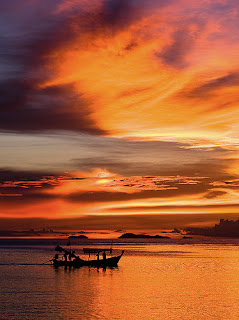As in visiting any
tourist destination, a trip to Koh Samui, one of the leading travel
destinations in Thailand, will have to take into account the local climate and
when is the best time for a visit. Samui weather is generally hot and humid throughout the year.
The more dramatic change comes during the monsoon season, which affects not
only Thailand but also its Southeast Asian neighbours, Indonesia, Malaysia, and
the Philippines.
There are two systems,
which prevail during the times of the monsoon. These are the northwest and the
southeast monsoon systems. During the southeast monsoon, which occurs from
October to December, tropical storms can be expected across Indonesia and the
Philippines, weather systems that eventually veer towards Malaysia and
Thailand, including Koh Samui. The
island isn’t affected by the northwest monsoon that much which sweeps in from
India from June to early August. The Thai mainland serves as a buffer zone for
Koh Samui for any weather disturbance during this monsoon season.
Typhoon season
Nonetheless, heavy
showers lasting for some 30 minutes can be expected during this season,
particularly in the early afternoon up to early evening. More worrisome are
the powerful effects of the southeast monsoon, which can bring in strong
typhoons with high winds and heavy rainfall lasting sometimes up to a week.
Several storms can be expected to develop and pass the island during this
season. But in-between these typhoons, spells of the warm, sunny weather can
also be experienced.
At this time of the
year, most service-oriented tourist facilities like the ShaSa Resort at Koh
Samui’s southern point are prepared for any contingency that the inclement
weather may bring. The prolonged torrential rains can cause flooding from
waters flowing from Koh Samui’s central, mountainous area. This can result in some
inconvenience for visitors staying in the coastal towns, like Chaweng, which is
one of the tourist centres of Koh Samui.
Some remedies installed
Besides flooding, the
tourist hubs in the island, including those at Bophut, Lamai, Maenam, and
Cheong Mon, may also be affected by road closures and power outages.
Thankfully, many of the better-prepared tourist and travel facilities in the
island have already secured emergency power sources to somehow ease the
situation in case a strong typhoon hits the island. The drainage system of Koh
Samui has also been vastly improved so that whatever flooding occurs subsides
reasonably quicker than before.





